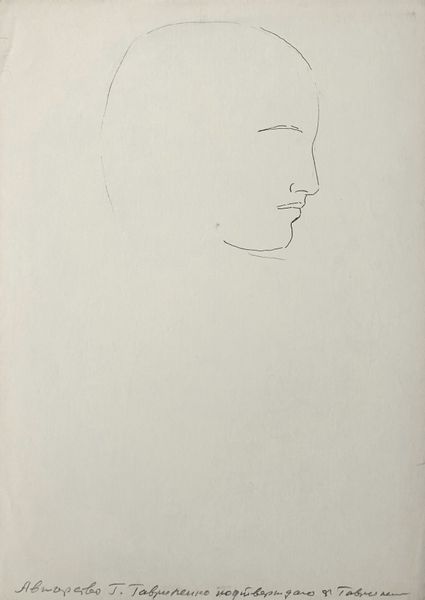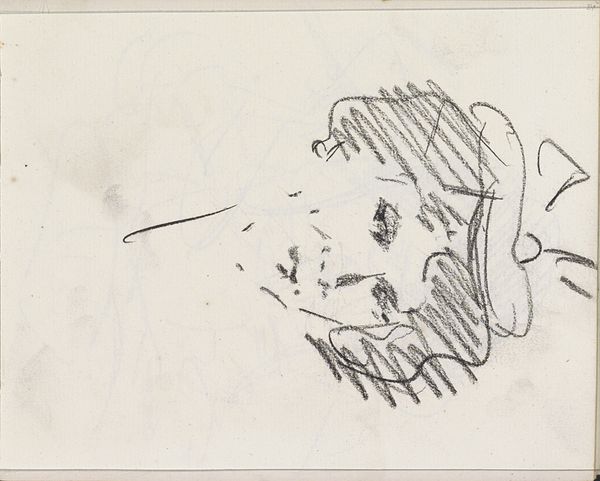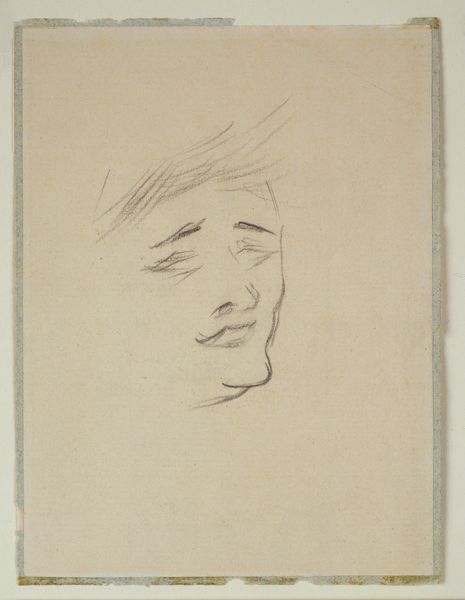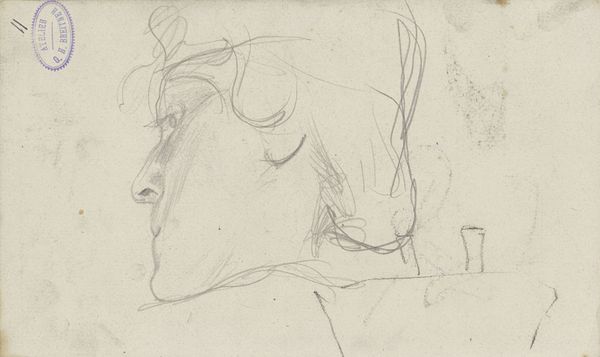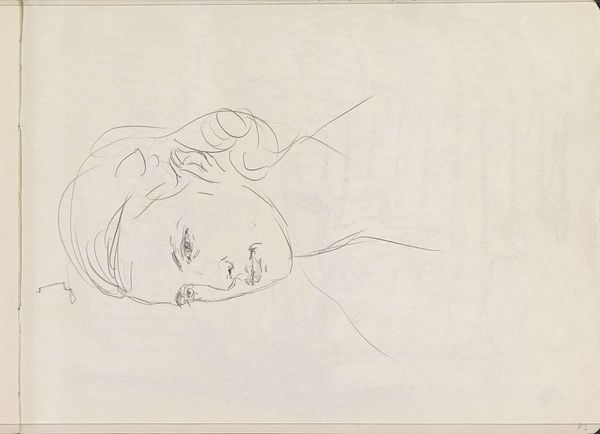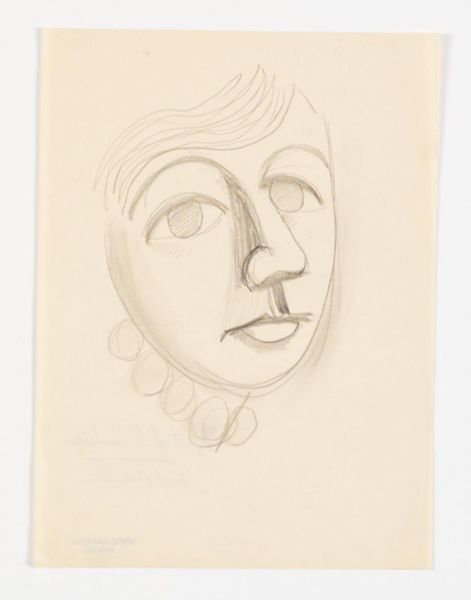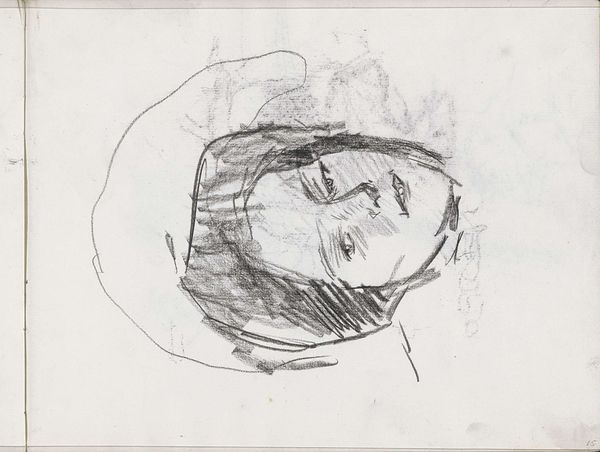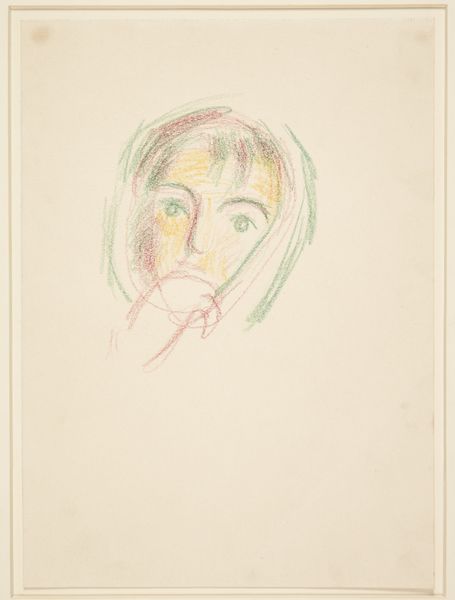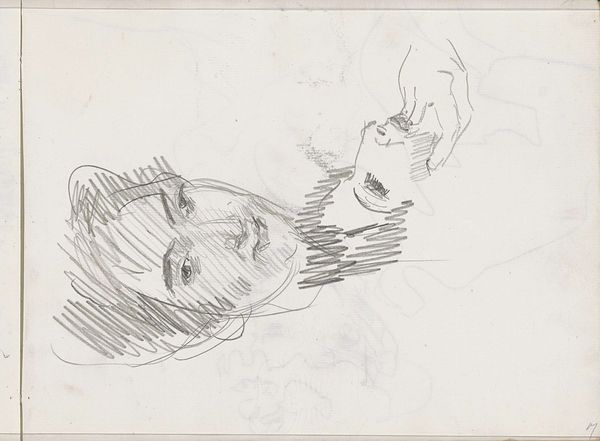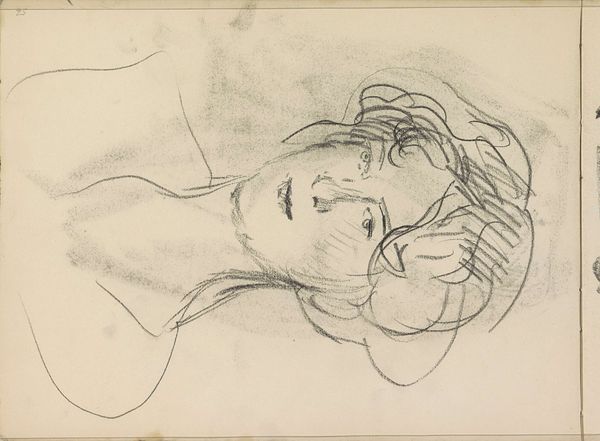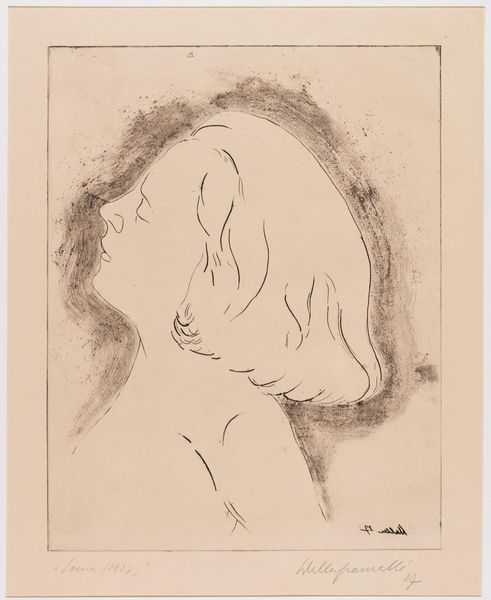
Kvindeportræt i trekvartprofil, bøjet mod venstre 1940s
0:00
0:00
drawing, pencil
#
drawing
#
figuration
#
pencil
#
modernism
Dimensions: 245 mm (height) x 220 mm (width) (bladmaal)
Editor: We're looking at "Kvindeportræt i trekvartprofil, bøjet mod venstre," or "Woman Portrait in three-quarter profile, bent to the left" by Vilhelm Lundstrom, from the 1940s, a pencil drawing. It feels so simple, almost like a preliminary sketch, yet there's a profound sense of melancholy. How do you interpret this work? Curator: It's tempting to see melancholy, isn't it? But let's think about the 1940s—the height of World War II. This isn't just a portrait; it's a reflection of a Europe in crisis, a Denmark under Nazi occupation. The downcast gaze, the simplified form… could these be subtle visual metaphors for a nation under duress? Lundstrom was a modernist, right? Editor: Yes, it is marked as such. I see that, I hadn't thought of it in those terms – as resistance perhaps? Curator: Maybe resistance is too strong a word. More like a quiet observation, a poignant acknowledgment of the collective suffering. Think about the role of women during the war, often left to bear the emotional and practical burdens. Doesn't the angle, her "bent" posture, evoke that sense of being weighed down? Do you see anything in the construction of the drawing? Editor: I hadn't made that connection, but it certainly resonates now that you mention it. Her features are soft, but sharp. I can also see the shadow, giving the effect of her features receding. There is much vulnerability, especially considering the war era that impacted them. Curator: Absolutely. These works operate as subtle historical markers of a specific culture at war. Art helps reveal these histories by documenting specific realities and responses to it. Editor: Thank you! It is like discovering another whole dimension by simply expanding on our personal observations of art. Curator: Exactly. We build dialogue and learn by drawing the personal, the socio-political, and historical contexts together in tandem.
Comments
No comments
Be the first to comment and join the conversation on the ultimate creative platform.
